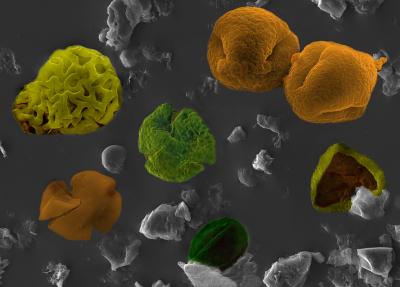Tropical Forest Diversity Increased During Ancient Global Warming Event
The steamiest places on the planet are getting warmer. Conservative estimates suggest that tropical areas can expect temperature increases of 3 degrees Celsius by the end of this century. Does global warming spell doom for rainforests? Maybe not. Carlos Jaramillo, staff scientist at the Smithsonian Tropical Research Institute, and colleagues report in the journal Science that nearly 60 million years ago rainforests prospered at temperatures that were 3-5 degrees higher and at atmospheric carbon dioxide levels 2.5 times today’s levels.
About the image: This is a scanning electron microscopy image of characteristic angiosperm pollen taxa from the Paleocene-Eocene Thermal Maximum. Image credit: Francy Carvajal, Smithsonian Tropical Research Institute (more…)

